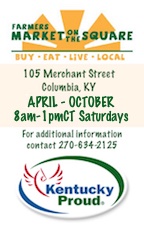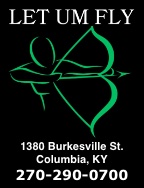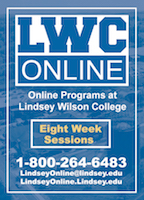| ||||||||||
Dr. Ronald P. Rogers CHIROPRACTOR Support for your body's natural healing capabilities 270-384-5554 Click here for details 


Columbia Gas Dept. GAS LEAK or GAS SMELL Contact Numbers 24 hrs/ 365 days 270-384-2006 or 9-1-1 Call before you dig Visit ColumbiaMagazine's Directory of Churches Addresses, times, phone numbers and more for churches in Adair County Find Great Stuff in ColumbiaMagazine's Classified Ads Antiques, Help Wanted, Autos, Real Estate, Legal Notices, More... 

|
Tom Chaney No. R721: Confusing the surface with layer underneath Of Writers and Their Books, A review of author Melissa Clark's Find Courtney First printed 30 July 2006. The next earlier Tom Chaney Of Writers and Their Books column,Wendell Berry's Hannah Coulter By Tom Chaney Confusing the surface with the layer underneath Mid way in her novel, Find Courtney (Bridgeworks Publishing, 2004) Melissa Clark has the character Fanoy remark "Language may be a sham, but what we see with our eyes is not." By this point in the story we have learned not even to trust language when it reports what the eye has seen. Fanoy, the narrator, a college student in Florida, has been invited to share an apartment with Courtney, a graduating senior whom she calls a Barbie college student -- a wealthy spoiled young woman who owns her own condo, spends her father's money lavishly, and who disappears one August morning on her daily run on the beach. Courtney had relegated Fanoy to a tiny room in the apartment, to one shelf in the fridge, and to the status of a mere observer of her exotic life. Fanoy details her place, but claims not to be bothered by it. When Courtney vanishes during finals week, Fanoy does not report the disappearance, rather she gradually becomes Courtney -- eating her food, watching her giant television, drinking her liquor. Ten happy days pass after the disappearance when Courtney's father Bret appears, and the search for Courtney begins. With Fanoy in tow, Bret takes all the right steps. They contact the college dean. They speak to Courtney's professor. They talk to a bartender who has been Courtney's drug supplier. Bret reports the disappearance to the police. And they call a campus meeting to determine if anyone has a word on the whereabouts of Courtney. As the search for Courtney is chronicled by Fanoy we learn of her own background -- daughter of a minor college professor who abused, belittled, and controlled her artist mother until she abandoned the family leaving only the memory of a book of the paintings of the Norwegian painter Edvard Munch. Fanoy's memory of those paintings becomes the controlling image of her life. The second wife had been the typical wicked stepmother, forcing Fanoy to care for her triplet half-siblings. The five members of the new family had died in a fire of suspicious origin. Fanoy is in college because of an insurance settlement related to the fire. The reader learns early on not to trust anyone in the maelstrom surrounding Courtney. Not Bret; not Courtney; most of all -- not the narrator. Bret whisks Fanoy away to his isolated Florida mansion which he explains had been built by a 1930s and 1940s ecdysiast named Crystal Lalique. A fan dancer, Bret explains -- "A specialist in male entertainment. Used to be very popular on the vaudeville circuit." One who "uses fans to obscure and reveal." Crystal, along with the paintings of Munch, becomes a central metaphor of the novel -- a psychological thriller.Fanoy obscures her part in the death of her family and becomes Bret's lover. In this she replaces Courtney whom we learn is not Bret's daughter but a childhood kidnap victim raised by Bret as a perfect child and later lover. Crystal is actually Daisy Loudermilk of Cincinnati who bashed her mother's head in with a poker. The statue of Laocooen which Crystal made the center of the fountain in front of her mansion holds the poker in his hand in place of the usual trident. We know that Courtney is dead. I must tell you that she is in repose beneath Crystal's fountain. Do not fear that I have revealed all. The landscape is littered with bodies. Fanoy is last seen in Oslo. She feasts on the paintings of Munch and walks the streets listening to Grieg on her walkman. "It's time for me to leave. Maybe I'll go to Venice. Or Paris. Maybe I'll go to Housatonic, Massachusetts, and look up Bret's real family. I'd like to see the riverbank where he was born in a moment of hesitation. "I went back to the gallery for the last time to buy a postcard of Munch's The Scream. I finally understand that painting. I can look at it now. I know what it's about. Bret was so wrong when he called me a coward. "In the Long Gallery I thought I saw my mother, walking past the windows, trailing her long cape. . . . You know it's time to go, when you start seeing things. "But I can handle it. I can handle anything. It's a family tradition. As my father used to say, she who transplants, survives." Melissa Clark is an accomplished literary ecdysiast. Her prose both conceals and reveals. She lives in Connecticut with her husband, Thomas Scheffey, and their two children. Truth, as Fanoy puts it, lies beneath the facts. Tom Chaney can be found telling stories, planning his next meal, and occasionally selling books at THE BOOKSTORE Box 73 / 111 Water Street Horse Cave, Kentucky 42749. Phone (270) 786-3084. email: Tom Chaney bookstore@scrtc.com The BOOKSTORE Munch's The Scream http://www.ibiblio.org/wm/paint/auth/munch/munch.scream.jpg The statue of Laocoo http://witcombe.sbc.edu/high-ren-mann/images/laocoon.jpg This story was posted on 2011-07-31 05:01:17
Printable: this page is now automatically formatted for printing.
Have comments or corrections for this story? Use our contact form and let us know. More articles from topic Tom Chaney: Of Writers and Their Books:
Tom Chaney No. R720. a review of Hannah Coulter Tom Chaney No. R719. Review of A Heckuva Job Tom Chaney No. R718: Robert Worth Bingham Tom Chaney: R717: Wm. Ellis, The Kentucky River, a review Tom Chaney: No. R716: A Grisham Addiction Tom Chaney: No. R715- Summertime reading Tom Chaney R714: The Bookman as Detective Tom Chaney: R713 - Memory of Old Jack, Wendell Berry Tom Chaney: R717 - The catalpa's white week Tom Chaney: Rumpole and the Primrose Path View even more articles in topic Tom Chaney: Of Writers and Their Books |


|
||||||||
|
| ||||||||||
|
Quick Links to Popular Features
Looking for a story or picture? Try our Photo Archive or our Stories Archive for all the information that's appeared on ColumbiaMagazine.com. | ||||||||||
|
Contact us: Columbia Magazine and columbiamagazine.com are published by Linda Waggener and Pen Waggener, PO Box 906, Columbia, KY 42728. Please use our contact page, or send questions about technical issues with this site to webmaster@columbiamagazine.com. All logos and trademarks used on this site are property of their respective owners. All comments remain the property and responsibility of their posters, all articles and photos remain the property of their creators, and all the rest is copyright 1995-Present by Columbia Magazine. Privacy policy: use of this site requires no sharing of information. Voluntarily shared information may be published and made available to the public on this site and/or stored electronically. Anonymous submissions will be subject to additional verification. Cookies are not required to use our site. However, if you have cookies enabled in your web browser, some of our advertisers may use cookies for interest-based advertising across multiple domains. For more information about third-party advertising, visit the NAI web privacy site.
| ||||||||||




















































